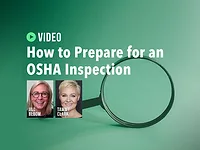Safety and Compliance Basics of Materials Delivery

Materials delivery is a basic activity of construction. All trades need deliveries directed to their projects. For roofing contractors, deliveries present unique safety, compliance, and property damage concerns. As a health, safety, and compliance professional, I see many of these concerns up close and personal.
This article addresses some of the top concerns with deliveries on construction projects. It is important to recognize and train drivers on these topics.
-
1. Setup. Delivery setup can create several different concerns for owners and other trades. Pre-planning and communication with drivers will eliminate these issues. For residential projects, it is important that the project manager or estimator evaluates the setup area proactively with a safety eye. The areas of concern include:
-
a. Location of set-up.
- If setting up on a public road, follow DOT requirements for signage, barricades, and PPE.
- If setting up on a customer’s yard, ensure the driver has adequate plywood and protective protocols for protecting the grass, landscaping, etc.
- If setting up in a commercial project, especially a multi-family style project where there are multiple deliveries locations and buildings, ensure drivers know where the site staging and lay down areas are, and where emergency access and egress roads are established around the perimeter of the project are located. It is not legal to block these roads, but it is not uncommon to see materials unloaded and staged on emergency paths or roads.
-
b. Safety.
- On residential projects, ensure communication with the owner and create temporary caution tape barricades over doors to remind customers of ongoing overhead work and prevent people from walking out underneath the lift zone.
- Secure the lift zone and barricade to prevent people from walking into the area when materials are flown overhead.
-
- 2. PPE requirements. Ensure drivers know PPE requirements before they enter the site. Most commercial construction projects have strict PPE requirements for all visitors and workers on site. This applies to drivers as well. Too often, I must inform drivers of the site requirements and ask them to go to the nearest retailer and purchase long pants or boots. Hard hats and high-visibility clothing are also typically required for everyone on site. Drivers should have their own PPE with them and be trained to put it on before they get out of their truck.
-
3. Training.
- a. Based on ANSI standards that OSHA enforces as “incorporated by reference,” drivers will need to be “certified,” “licensed,” or, at the minimum, “in-house trained.” Documentation of current training must be on the driver’s person unless it is in-house training done by the company internally. Training records must be retained in the office and able to be produced upon request by OSHA or DOT inspectors.
b. The training needed for each type of equipment depends on the DOT classification of the equipment. Cranes are classified as any equipment used for “lifting and setting” or “holding, supporting, or stabilizing materials while being attached to a structure.” Cranes require a certified crane operator, but articulating knuckle boom cranes have been exempted from this requirement only for lifting bundled materials such as sheets and packages of roofing shingles and rolls of roofing felt.
This article originally appeared in Roofing Supply Pro.
Roofing Supply Pro is the go-to, trusted source for news and information about the roofing and building materials suppliers that support roofers across North America. From inventory management and logistics to sales strategies and best safety practices, our team of editors, correspondents, and contributors will offer consistent coverage of the people, products, new technology, and emerging trends that will help suppliers elevate their business. Enjoy this column and check out our additional content by visiting www.roofingsupplypro.com and signing up for our free eNewsletters.
Looking for a reprint of this article?
From high-res PDFs to custom plaques, order your copy today!








